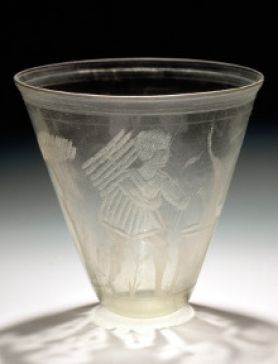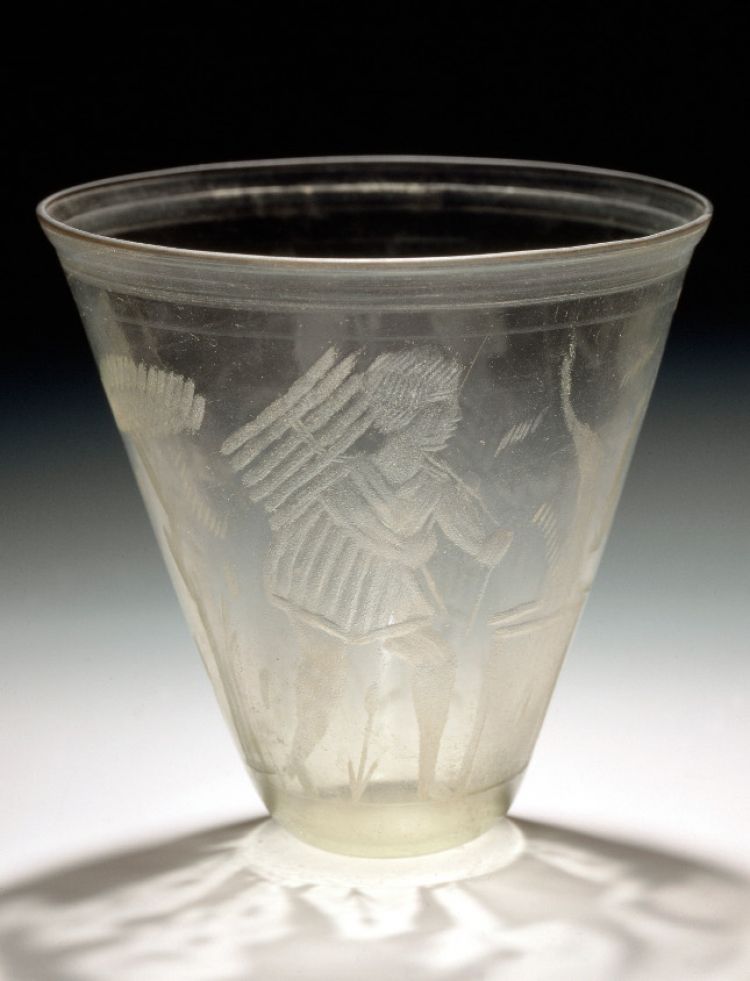Etched glass of Christian origin

This engraved glass goblet of truncated cone shape, found in grave n° 157 of the late Gallo-Roman necropolis at Porte Blanche in Strasbourg, is decorated with three scenes from the Old Testament.
The first scene shows the sacrifice of Isaac by his father Abraham. The figures can be seen on either side of the flames rising from the sacrificial altar. On the left, Isaac is dressed in a short tunic and carries a bundle of sticks on his back. On the right, Abraham, bearded and wearing a tunic and pallium, wields the sacrificial knife.
The second scene is separated from the previous one by a pine tree. It depicts Moses holding the stick with which he has struck the rock to bring water gushing out. Between this rock and Abraham stands a fourth figure similar to Moses in his pose and costume. Exact identification of this figure remains difficult.
The workshop in which these very exceptional glasses were produced was probably located in Cologne. This piece, remarkable for its manufacturing technique and its decoration, has been interpreted as possible evidence of the introduction of Christianity to Alsace and has been dated to the end of the 3rd or the very beginning of the 4th century AD.
